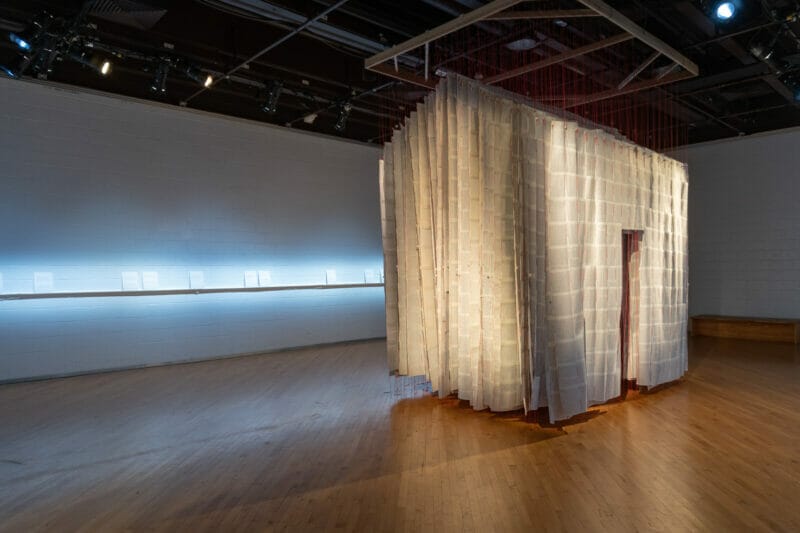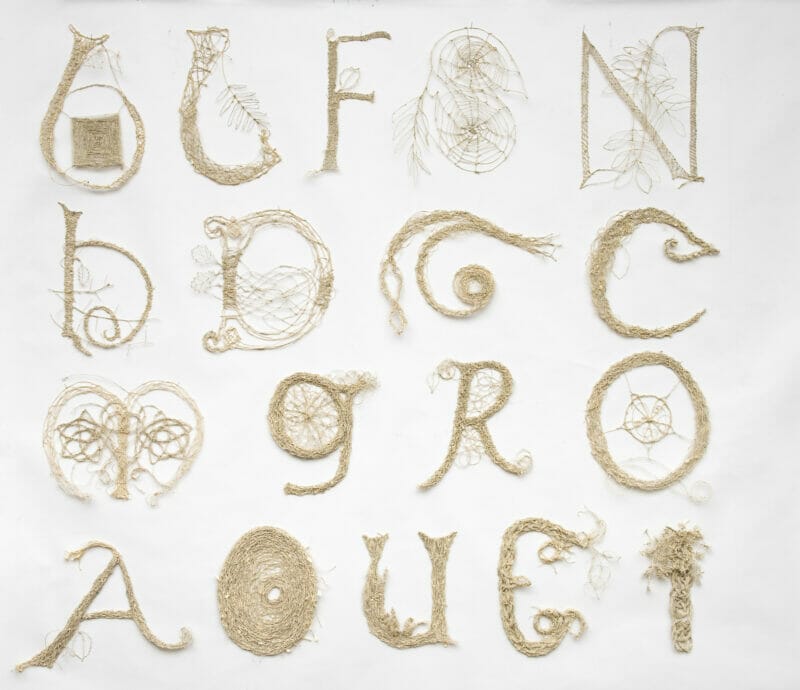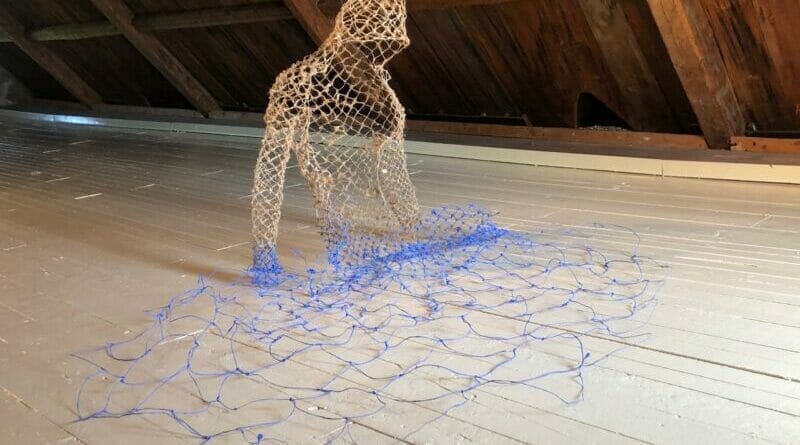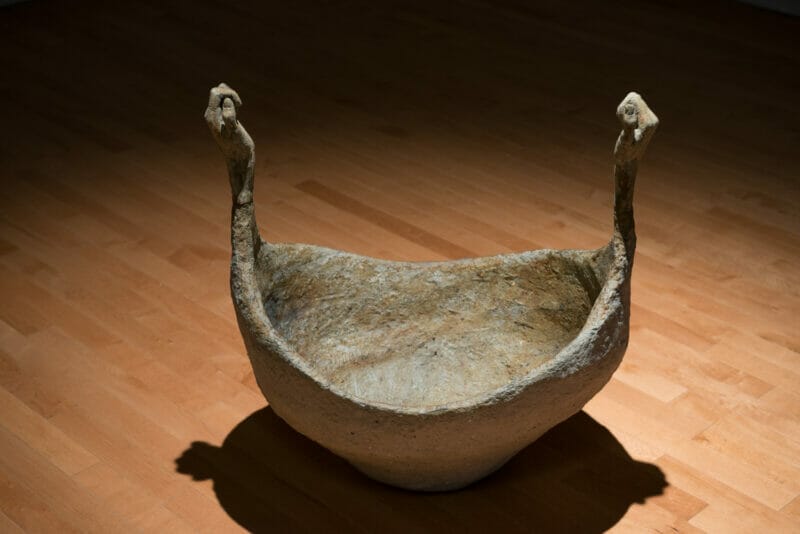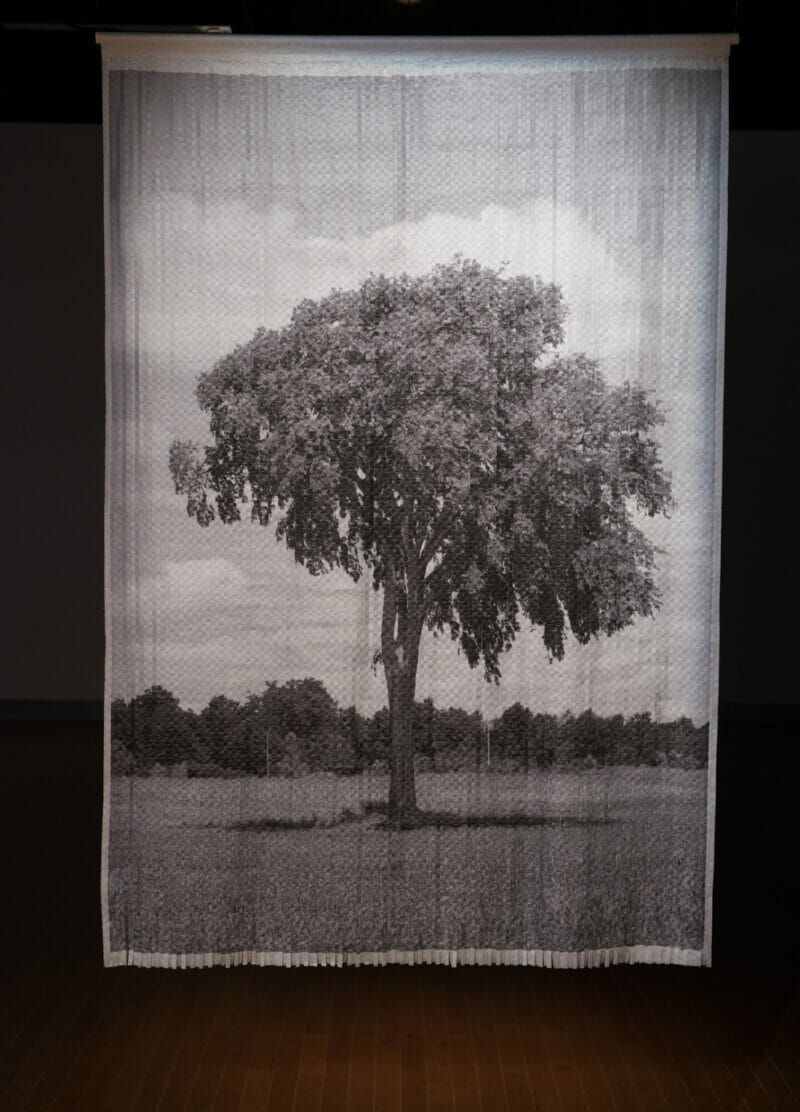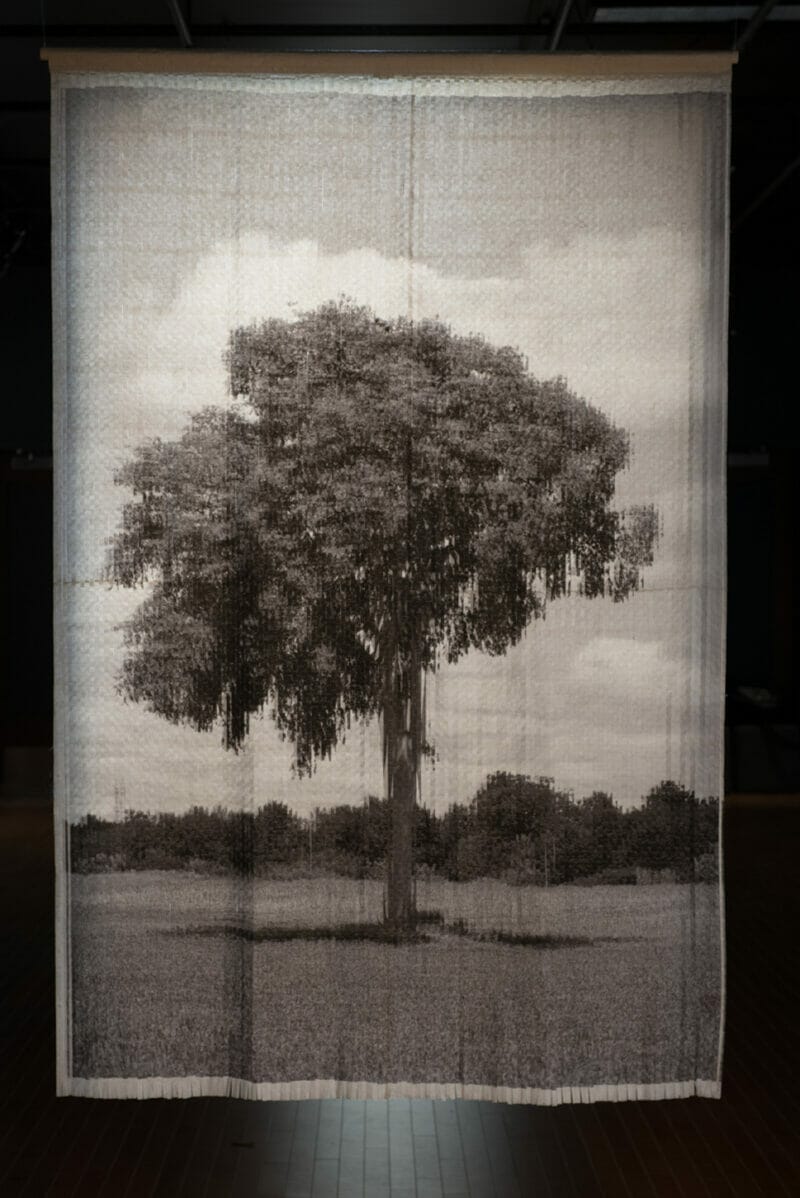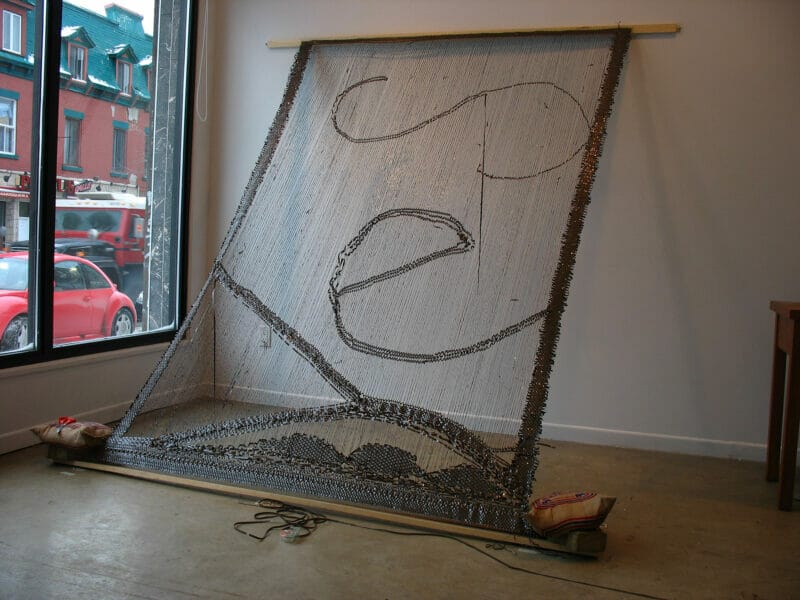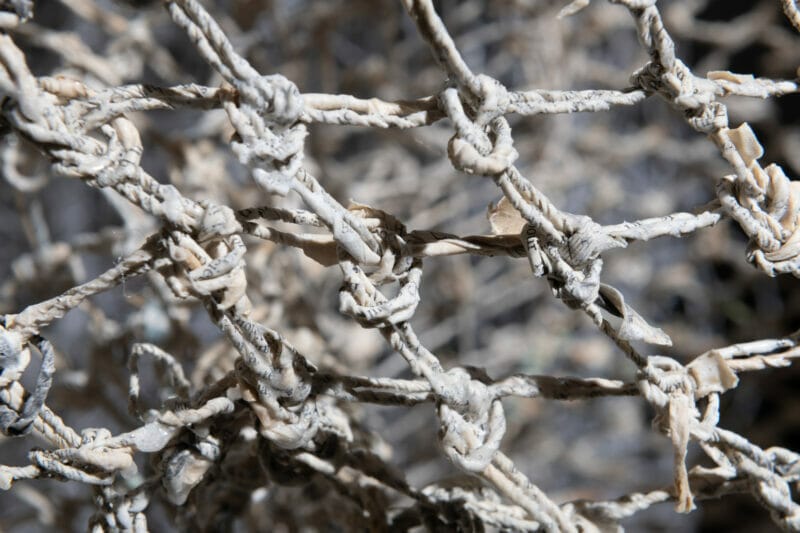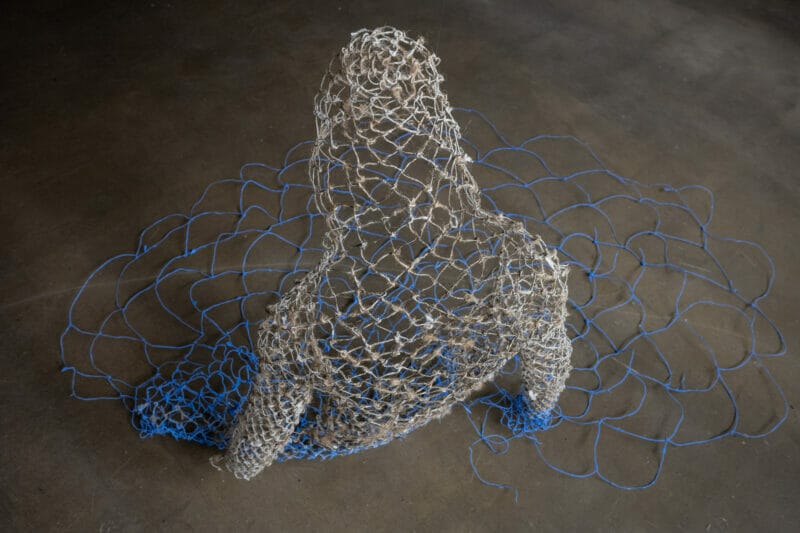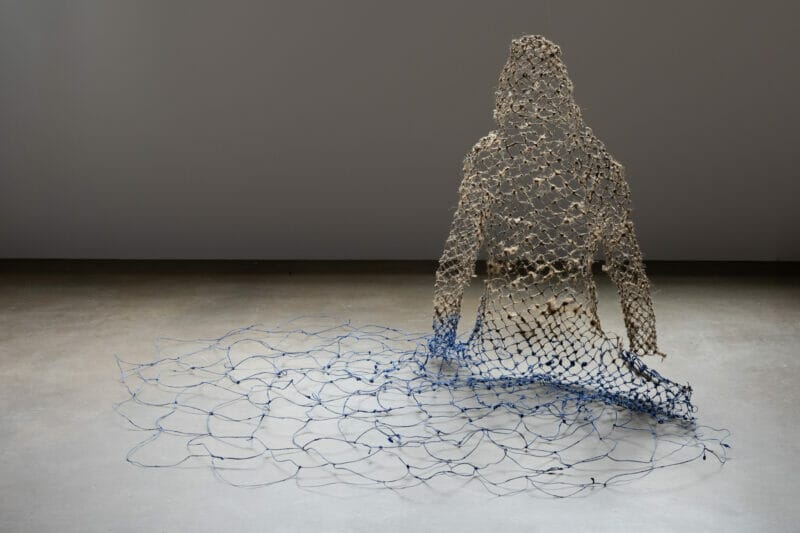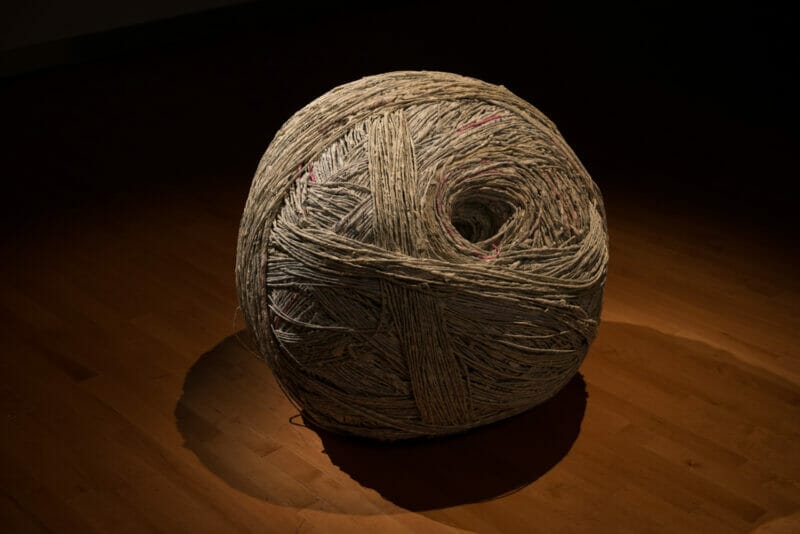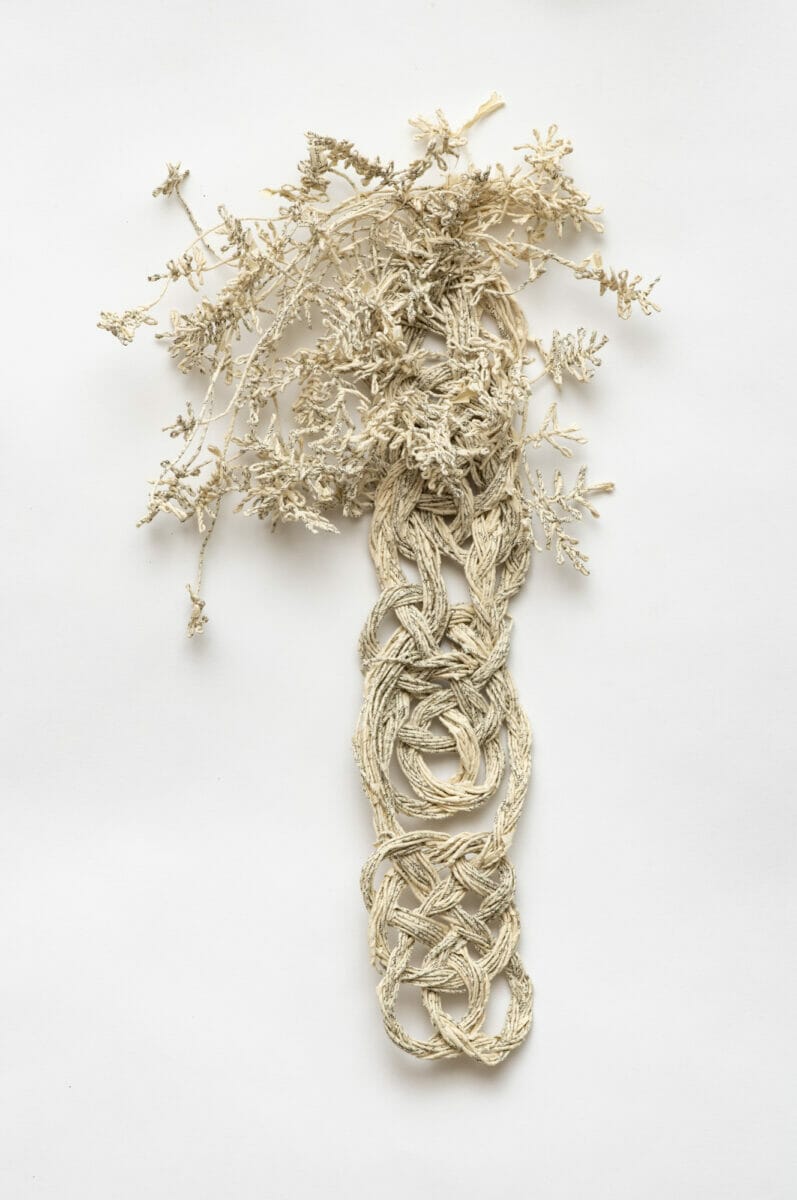KAREN TRASK
*Featured photo: The Rising Tide, work installed at the Vieux Presbytère in Deschambault. Linen paper thread core-spun around a fine steel wire, pigment, raw flax straw. 170 x 86 x 100 cm. 2023, Photo: Paul Litherland, copyright Karen Trask
Multidisciplinary artist born in Ontario, Canada, Karen Trask graduated from the University of Waterloo (Ontario) and received her MFA in visual arts from Concordia University in Montreal.
Trask’s practice ranges from performance and video art to sculpture and installation art. Her work has been shown in numerous international solo and group exhibitions, has received major awards, and can be found in public and private collections in Canada, Europe, and the United States.
Her work is currently on display at the Biennale Internationale du Lin de Portneuf with the work The Rising Tide, an empty dress that alludes to the forms of a now-absent human figure through which the artist reflects, in an evocative, intimate way and with a poetic approach, on the themes of absence and nothingness.
The media partnership between the Biennale and ArteMorbida was an opportunity to ask Karen Trask some questions about the content of her research and the salient features of her artistic career.

Your artistic production spans different media such as video, installations, performances, sculptures, artist-books, textile. What is the “fil rouge” connecting this entire body of work?
If there is one single ‘fil rouge’ connecting my different ways of making art, it would have to be my desire to examine personal experiences. Making is a way of knowing. My work could be viewed as a process of making an ever-changing self-portrait.
Curiosity, process and play, are motivations for my work. An idea comes and I wonder how a material or a technique could represent that idea and curiosity just takes over. My process is often revealed as an integral part of my videos and performances. Playfulness is present in many of the videos.
The notion of time is present in all of my work. Through repetitive processes and cycles of making and unmaking, I am looking to create a sense of timelessness. I like finding the tipping point where I can’t tell if the work is coming together or falling apart.
Language, the written word, the literary text, are privileged sources of inspiration in your artistic research and express a strong conceptual and symbolic value. Can you tell us about this aspect of your research? Is there a literary work that has been an important source of inspiration for you?
I have a love-hate relationship to the written word that was born out of loss. When I was 6 years old, my mother died in a car accident. Learning to read and to write coincided with death. Each word absorbed was a step in recreating myself without her and a placing of words between my body and hers. This marked the beginning of a dialogue with absence, that I have been exploring, breathing, falling into and ultimately searching for words to describe.
As a child, I was fascinated with fairy tales (there are many absent or dead mothers in fairy tales) and as a young artist, the Grimm fairy tale The Handless Maiden was instrumental in helping me to understand how my time and body was at the service of men and a patriarchal society. Many early works were about restoring my body, connecting my hands to my head and heart. Later, the Greek myth of Penelope, her weaving and un-weaving as a way to stretch and to own time directly inspired many works. Both of these stories gave me courage and discipline as a woman artist to continue my work. I am fascinated by the ephemeral nature of language. I want to empty a word of its contents, reveal its etymology and explore its materiality. I have transformed many well-known texts into textiles: Le petit Larousse illustré, In Search of Lost Time, by Marcel Proust, The Waves, by Virginia Woolf and Ulysses, by James Joyce. I enjoy finding a visual, sculptural way to represent texts. Living in Montreal where English and French co-habit in a lively and interesting way continues to be inspiration for work.
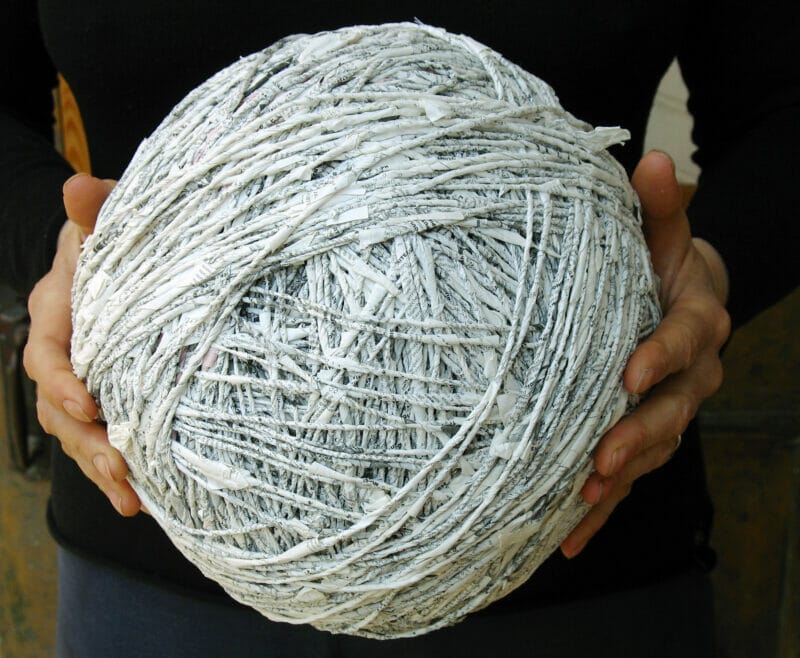
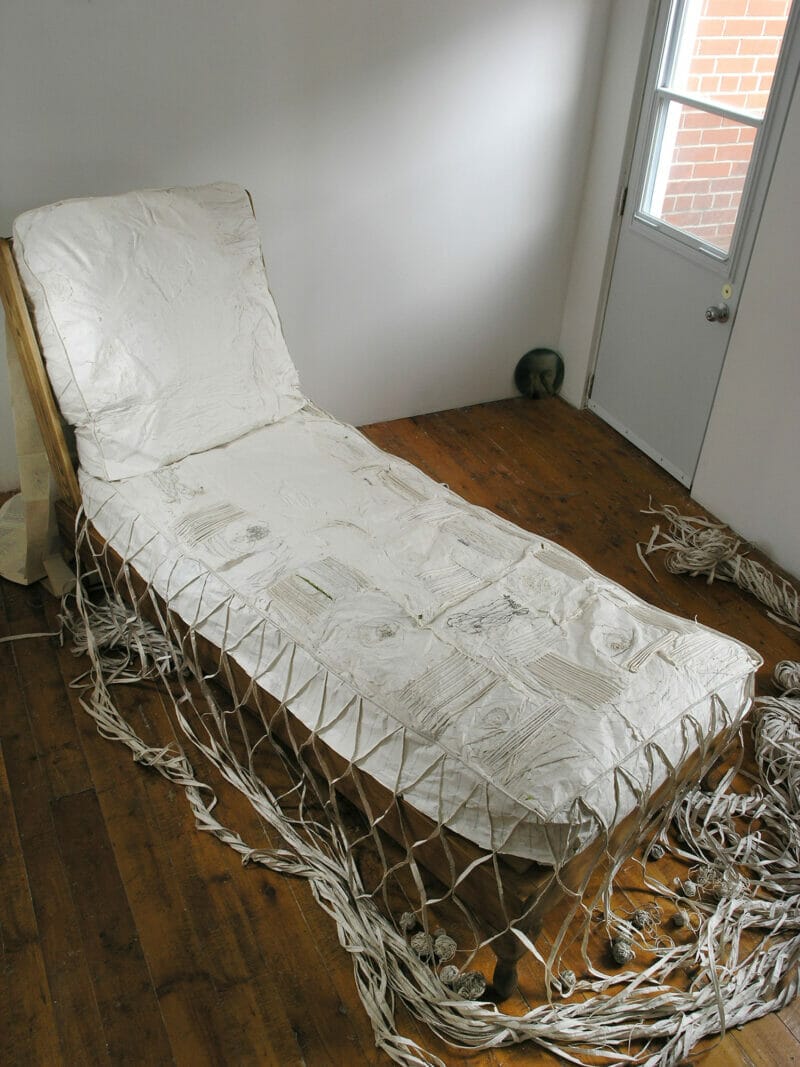
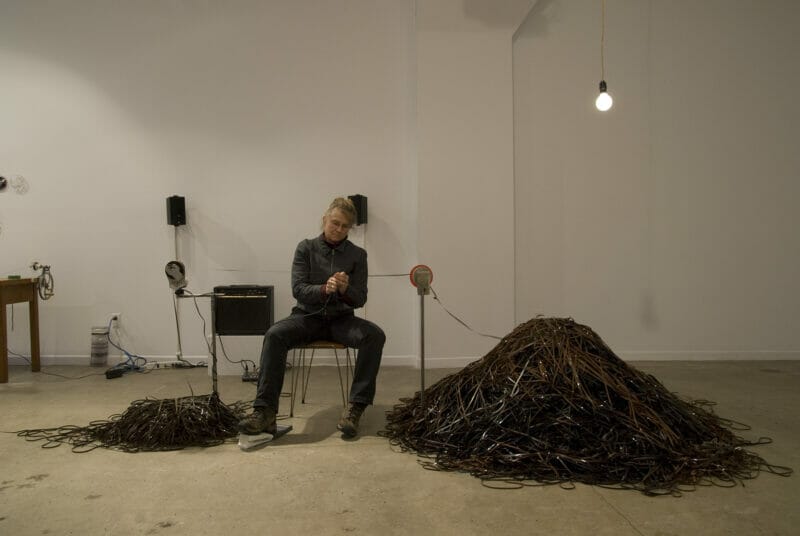
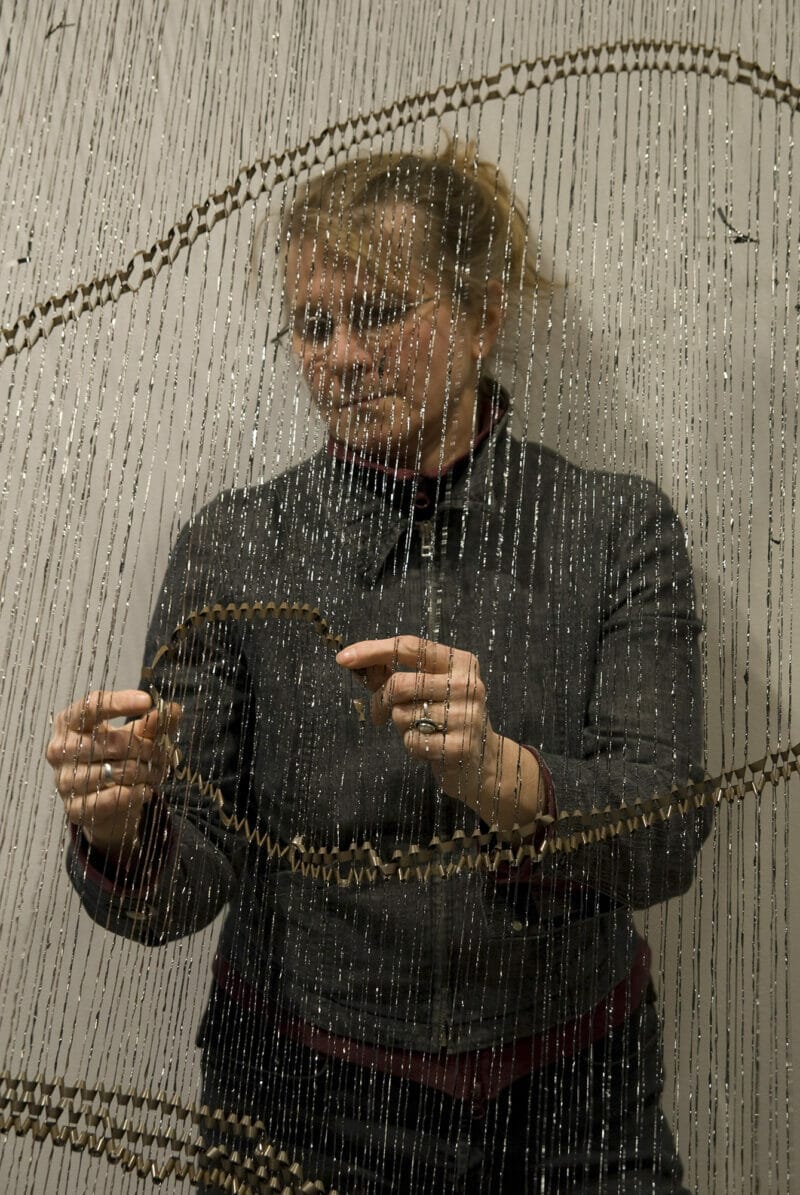
Your works stem from a transformative act, from the manipulation of the book’s structure. Paper is your material of choice and weaving represents the technique of your creative process. How and why did you approach weaving? Tell us something more.
I have always loved the metaphor of weaving – the meeting of warp and woof – a perfect metaphor for society – and the source of some expressions found in language to this day i.e.: the social fabric, a tightly knit community. I also love the metaphor for spinning, spinning straw into gold, spinning tales – both magical transformations in time and space. I did a lot of weaving of digital prints on paper that I made and this grew out of a desire to bring attention to the paper. I saw it as a way to value the silence and the emptiness of paper as more than just a support material. I discovered the word ‘textile’ hidden in the etymology of ‘text’. I felt the weight of the centuries of women’s contributions to society and to history buried in this process. Weaving was a way of acknowledging their contribution through my fingers. I love how weaving brings things together.
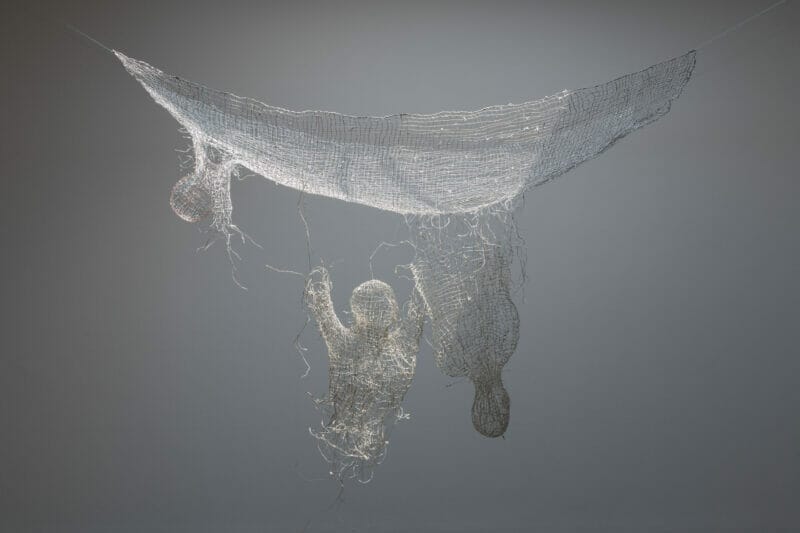
Over the years, you have participated in many prestigious artist residencies. Can you tell us about this experience and its influence on your personal and professional development?
I am very lucky to live in Quebec – a place that values its artists and allows artists the opportunity to explore other cultures through residencies. It is an invaluable way to have the complete freedom of time and space to open up to new possibilities. I met my partner on a residency in Quebec. On a residency in Finland, I went to Inari north of the Arctic Circle, exploring ideas about winter, snow and isolation, all things I experienced as a child, growing up on the family farm in Canada. The video, Winter Fruit was a result of my time spent there. In Paris, it was the light that fascinated me and especially the lights from the boats on the Seine River that shone into my studio at night. I made the video – Histoires de lumière, a play of shadow and light moving through space. On a residency in Tokyo, I was able to work with artists there learning techniques for making and for spinning paper. I spent two years as artist in residence shared between two universities, one Francophone the other Anglophone in the Canadian province of New Brunswick. This was an amazing time for me working with students and being close to the Atlantic Ocean. An entire body of work inspired by Virginia Woolf’s The Waves was made during this period. This is also where I learned how to make fishing net knots, a technique I have used in recent work and for the work I am presenting at the Biennale du lin de Portneuf.
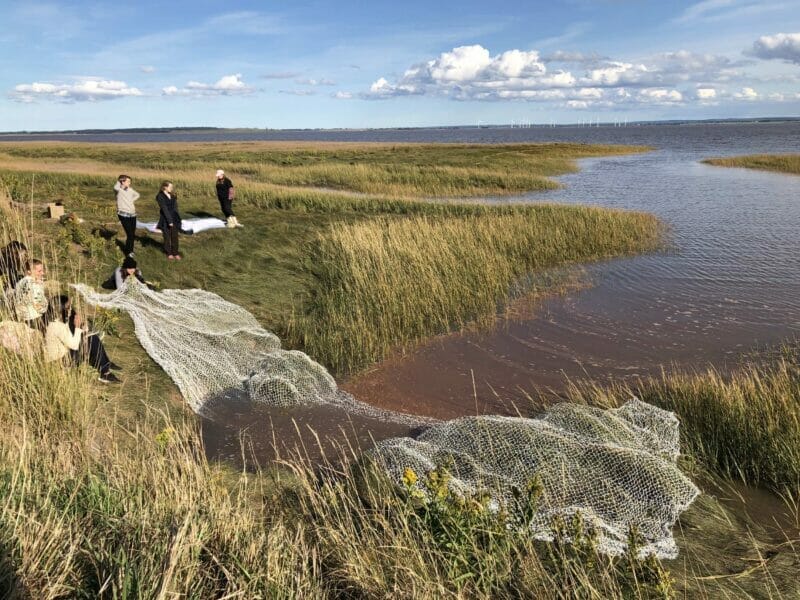
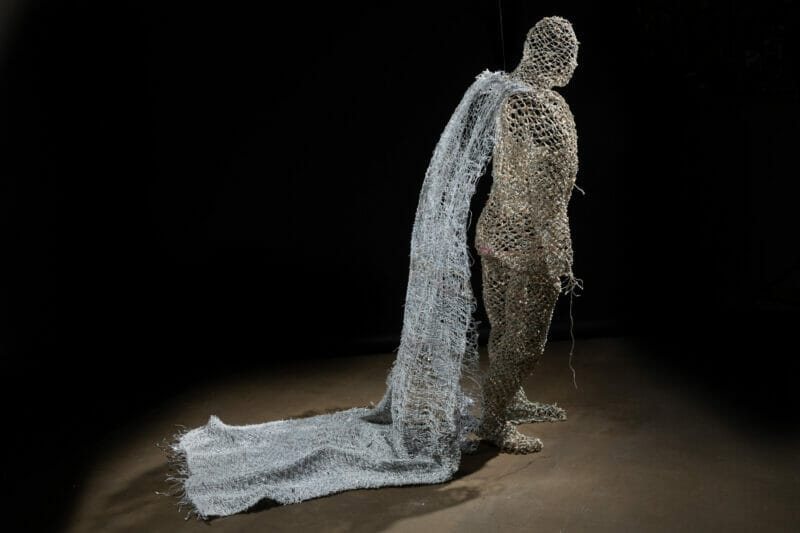
Your work, The Rising Tide, will be part of the Biennale du lin de Portneuf, “Sans Domicile Fixe” 2023. How did this work come about, what themes does it explore? How important is it for an artist to have access to a prestigious event like the BILP?
I exhibited work at the BILP in 2005 and was invited to participate in the 2023 edition. As a material, linen has an important history, evident in the etymology of the word ‘line’ from ‘linea’ Latin for linen, also the source for ‘linceul’ in French or shroud in English. Flax straw was a common material for insulating houses and for stuffing mattresses. I saw the theme “Sans domicile fixe” as a situation of choice- of having or not having a choice to be ‘of no fixed address’. I decided to work with the idea of climate upheaval and the threat of migrations forced by floods. I knew I wanted to work with flax straw and to transform it through spinning and papermaking. I remembered the flax fields of blue flowers of my childhood and I pigmented some of the linen paper pulp with ultramarine blue pigment. I made a shroud-like, hooded, empty garment made with linen paper thread and flax straw, core-spun around a fine steel wire. The garment is made using the same knot used for making a fishnet and takes the shape of a seated person no longer present. The lower part of the body is blue and the fishnet pattern evolves into a wave pattern. Is the body sinking into or is it rising out of the ocean? A future to be decided….

Is there a project, a work that is close to your heart that you have not yet had a chance to realise?
Strangely, I always thought I would be a writer. I have made several artist books combining visuals and text. There is one book I would still like to write. I have kept notes of my dreams throughout my entire life. I would like to write about how those dreams influenced my art making.
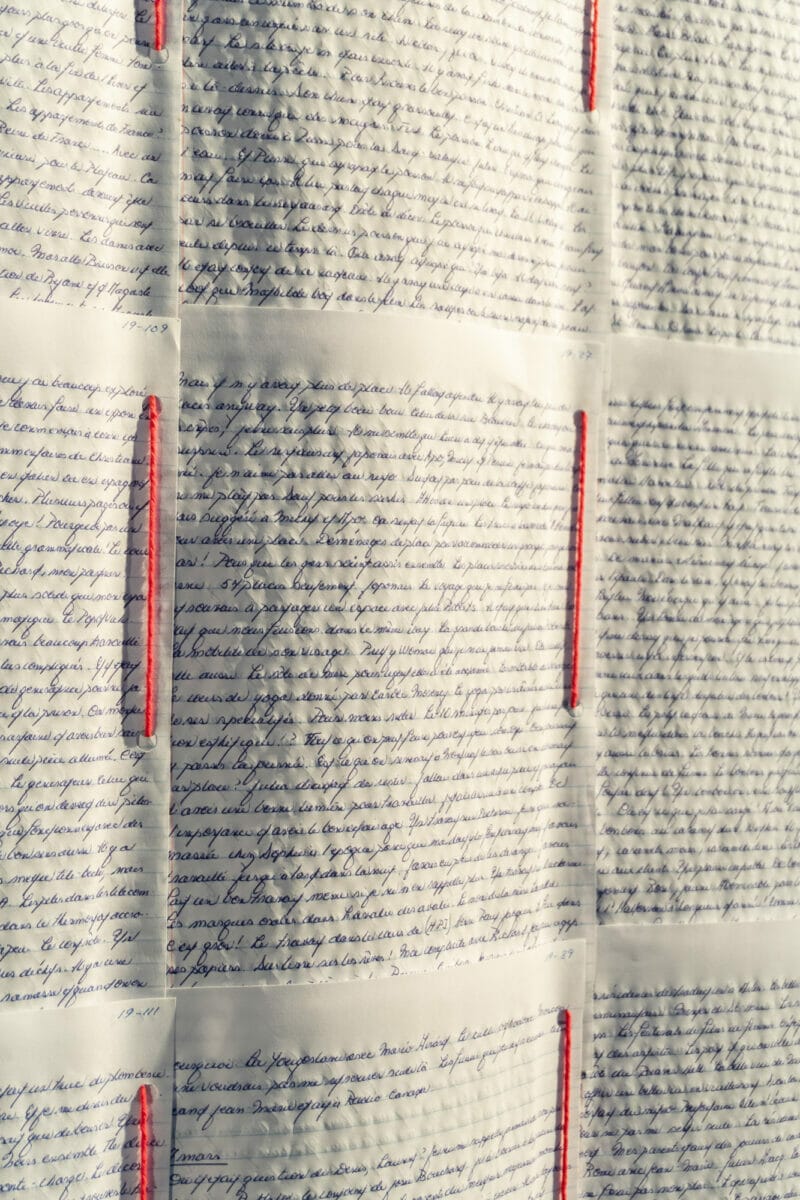
What are you working on at the moment?
I am beginning a new project in clay, making small swimming and sleeping figures. I am currently imagining them grouped and wall mounted in a swirl not unlike The Circle of the Lustful: Paolo and Francesca, by William Blake. His image was based on Dante’s Inferno, which I will no doubt have to read as part of my research. Perhaps the figures will be imbedded in a paper-thread weaving of the Inferno. I like being surprised by what comes. Life is such a mystery!
